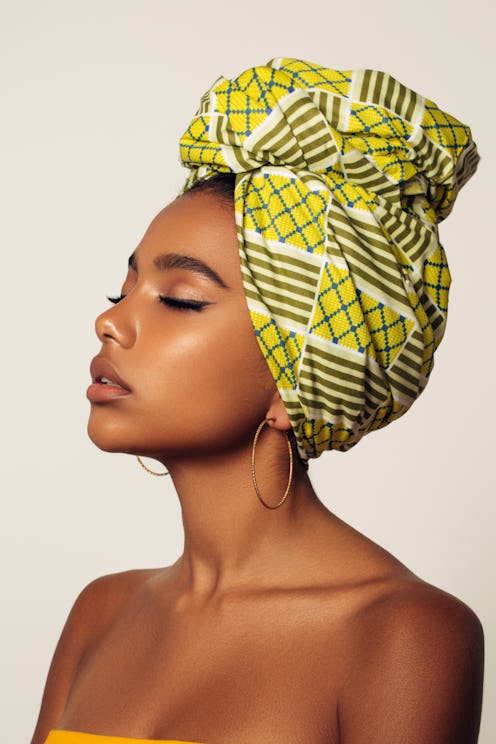Beauty
Is It A Piercing Bump Or A Keloid? A Derm Explains The Difference
Here’s how to know for sure.

Piercings are, without a doubt, one of the easiest, most cost-effective ways to give your look a little boost whenever the mood for a makeover strikes. The endless possibilities (think placement, style, and jewelry type) and only-as-permanent-as-you-want nature make both trendy and classic piercings a no-brainer. But as is the case with any body modification, there’s always the chance of side effects. Trying to figure out whether you have a piercing bump vs. a keloid is a common post-piercing issue, made all the more difficult by how similar the two skin conditions can look.
A piercing bump is a fairly common, well-documented bodily response to the piercing punctures themselves. Though they aren’t necessarily a cause for concern on their own, the raised knots are routinely confused for keloids — an entirely distinct skin issue with its own treatment plan. So how do you even know if you’re dealing with a piercing bump or a keloid? Bustle spoke to Dr. Anar Mikailov, M.D., FAAD, board-certified dermatologist and founder of Skintensive, for a no-nonsense rundown on exactly what piercing bumps and keloids are, how they differ, the ways you can tell them apart, and how to banish them both safely.
What Are Piercing Bumps?
If you notice a small bump has formed at the base of your new piercing, don’t freak out just yet. Even if it looks a bit zit-like, chances are it’s a classic piercing bump — a very common (and temporary) inflammatory response that can form due to things like getting the jewelry snagged, overcleaning, fiddling with it, or mild irritation from beauty products or low-quality jewelry.
Most often, a piercing bump manifests in the form of “soft, slightly mobile bumps under the skin that is typically the size of a small pea,” Mikailov tells Bustle. Sometimes, when bacteria or dirt gets into the piercing, a pimple-like pustule will appear by the piercing site — resist all urges to pop, though. Most of the time, neither formation indicates an infection or any reason to worry. These piercing bumps are usually just an inflammatory response by your immune system’s natural defense mechanism, Mikailov explains. In other words, it’s just your body doing its job when faced with a foreign entity — and that’s what a piercing is, after all.
What Are Keloids?
Though many internet forums interchangeably call piercing bumps keloids and vice versa, they couldn’t be more different. Mikailov explains that keloids are fibrous tissue growths that form in areas of prior trauma (think burns, incision scars, cuts, acne scars, and yes, piercings) that typically develop in the teen years or a bit later. Though keloids can affect any race, gender, or ethnicity, emerging research points to genetic predisposition, meaning it can run in the family. Because of their triggers, you can think of keloids as the body’s overreaction to trauma — it’s scar tissue that can grow to far exceed the original wound size and can often be quite painful and itchy. “Keloids can be disfiguring and actually restrict normal function,” Mikailov adds.
How To Tell A Piercing Bump From A Keloid
From the above descriptions, it becomes much clearer how to tell the difference between a piercing bump and a keloid. A keloid will be much larger than the surface area of the wound, often growing to cover it completely in a puffy, irregular shape. By comparison, a piercing bump will be much smaller, much smoother, and found directly at the base of the piercing, Mikailov outlines. If you’re well within your 20s or later and have yet to experience a keloid, chances are you won’t — but, conversely, if you have either a personal or family history with keloids, you’ll want to avoid intentional skin-breaking trauma like piercings to mitigate their growth.
How To Treat Piercing Bumps & Keloids
Because keloids and piercing bumps are so different, their treatment options are, too. Prevention is the best cure in the case of piercing bumps — first, be sure to stick with surgical-grade (also called implant-grade) titanium jewelry, according to Mikailov. Piercing bumps will often heal themselves with careful handling within a few weeks, but if any issues arise, see a dermatologist. “Injection of steroid medicine directly into a piercing bump can be curative,” Mikailov says. You can always contact your piercer for questions, but a medical professional is usually the best resource when it comes to these issues.
If you do indeed have a keloid, you’ll want to seek out a dermatologist, too. Keloids are more difficult to treat, Mikailov explains — and they don’t improve on their own. “Injections of steroid medicine or chemotherapy injection or other mixtures sometimes help,” he says, though surgical removal is also occasionally necessary. “These require dermatologist evaluation and management.” It’s the rule of thumb across the skin issue spectrum: When in doubt, it’s always the safest move to speak with a medical professional.
Studies referenced:
Betarbet, U. (2020). Keloids: A Review of Etiology, Prevention, and Treatment. https://www.ncbi.nlm.nih.gov/pmc/articles/PMC7158916/
Metts, J. (2002). Common complications of body piercing. West J Med. https://www.ncbi.nlm.nih.gov/pmc/articles/PMC1071670/
Tsai, C. (2019). Keloid research: current status and future directions. Scars, Burns & Healing. https://www.ncbi.nlm.nih.gov/pmc/articles/PMC6700880/